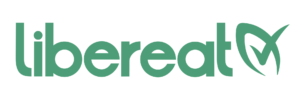Food safety is a critical aspect of improving public health, helping consumers make informed choices about the products they purchase, and enhancing food standards through measures such as preventing food fraud and ensuring the availability of high-quality ingredients.
In New Zealand and Australia, food standards are developed by Food Standards Australia New Zealand (FSANZ), which plays a similar role to the Food Standards Agency in the UK.
We’re diving deep into the role of the FSANZ, how food safety standards are enforced, and the labelling requirements businesses must follow.
We’ve provided below a general overview of FSANZ, including how food safety standards are enforced and the key allergen labelling requirements to be aware of.
How FSANZ Enforces Food Safety
The FSANZ is an independent regulatory body that was first established in 1991 by the Food Standards Australia New Zealand Act 1991 (FSANZ Act). Their primary purpose is to ensure consumers have access to safe food by regulating various aspects of the food industry.
Safety standards are developed and compiled in the Food Standards Code, which is split into 80 Standards covering a wide variety of safety requirements. Examples include: regulating the use of ingredients, additives, and minerals; requirements for the design of food premises; and allergen labelling requirements.
There are some key differences in how FSANZ functions in Australia compared to New Zealand. For example, chapters 3 and 4 of the Food Standards Code are only applicable to Australia.
Chapter 3 mandates that certain businesses must implement food safety programs and details what should be included in them. Food safety practices for businesses and handlers are also detailed to ensure that food doesn’t become unsafe or unsuitable, including guidelines on storage and transportation, as well as hygiene practices that must be followed. Later sections of the chapter focus on food safety management tools, including those required for various businesses and the expected training for food handlers.
The final section outlines requirements for food premises and equipment, including the layout of the premises and the necessary cleaning and sanitisation of fixtures, fittings, equipment, and transport vehicles.
Chapter 4 outlines primary production and processing standards for various food products, including seafood, bivalve molluscs, poultry and other meats, dairy products, egg and egg products, seed sprouts, berries, leafy vegetables, melons, and wine production requirements.
Many of the standards laid out in these chapters are instead set and enforced by the Ministry for Primary Industries in New Zealand.
Major allergens in Australia and New Zealand
Australia and New Zealand both identify several food allergens that are responsible for the majority of allergic reactions in the respective countries and therefore must be correctly labelled and declared by food businesses selling packaged food.
Foods and Ingredients to be declared under allergen labelling requirements in Australia
- Wheat
- Fish
- Crustacean
- Mollusc
- Egg
- Milk
- Lupin
- Peanut
- Soy, soya, soybean
- Sesame
- Almond
- Brazil nut
- Cashew
- Hazelnut
- Macadamia
- Pecan
- Pistachio
- Pine nut
- Walnut
- Barley
- Oats
- Rye
- Sulphites
Barley, oats, and rye must be declared if they contain gluten, and sulphites must be declared if present in amounts equal to or more than 10 mg/kg in food.
Cereals containing gluten, such as wheat, barley, oats, and rye (or their hybrids), must identify the presence of gluten in a summary statement, which is a short highlighted section of packaging that clearly states the allergens present.
Bee pollen, propolis, royal jelly, and food containing these products must also be declared in a warning statement due to health risks consumers may be unaware of. A list of other foods requiring a warning statement can be found on the FSANZ website.
Foods and Ingredients to be declared under allergen labelling requirements in New Zealand
- Peanuts
- Almonds
- Brazil nuts
- Cashews
- Hazelnuts
- Macadamias
- Pecans
- Pine nuts
- Pistachios
- Walnuts
- Crustacean
- Molluscs
- Fish
- Milk
- Egg
- Wheat
- Soy
- Sesame
- Lupin
Similar to Australia, added sulphites must be listed when above 10mg/kg in food, and Gluten found in wheat, rye, barley, oats, spelt, and triticale must also be listed on labels. Royal jelly must also include a warning statement similar to those in Australia, though the MPI website doesn’t explicitly mention including similar statements for bee pollen, propolis, and foods containing them.
The food allergens required to be labelled are largely similar between the two countries, though Australia mentions a larger number of specific tree nuts.
Allergen Labelling Requirements for Australia and New Zealand
The current set of allergen labelling requirements came into force on 25 February 2024 for both countries and were developed through FSANZ Proposal P1044 – known as Plain English Allergen Labelling or PEAL labelling.
Under PEAL, packaged foods containing the allergen ingredients as identified above for the respective countries must be declared using an ingredients list with a bold font for easy identification. The font size must be no smaller than the font used to list other ingredients. They must also be declared using a contains statement (e.g., contains milk) next to the ingredients list.
There are a few exceptions to allergen labelling in both Australia and New Zealand. For example, food packaged and labelled before 25 February 2024 is allowed to follow previous allergen labelling requirements and can be sold until 25 February 2026. Foods that aren’t required to have a label, such as those sold at a restaurant or cafe, must declare allergens near where the food is sold, and allergen information must be made available to the purchaser upon request.
The following foods are exempt from allergen labelling requirements as the FSANZ believes they are processed in a way that is safe for those with allergies to eat:
- Glucose syrups made from wheat starch are exempt from wheat declarations if they have no more than 20 mg/kg detectable gluten
- Fully refined soybean oil is exempt from soy declarations
- Tocopherols and phytosterols, which are soy derivatives, are exempt from soy declarations
- Distilled alcohol from wheat or whey is exempt from wheat or milk declarations
- Isinglass, a substance derived from the dried swim bladders of fish, if used in beer or wine
Consequences of Non-Compliance - Incorrect Allergen Labelling
Local government agencies in Australia enforce food labelling requirements laid out in the Food Standards Code. This refers to local agencies for the six states (New South Wales, Queensland, South Australia, Tasmania, Victoria, and Western Australia) as well as two territories (the Australian Capital Territory and the Northern Territory).
Failure to comply with allergen labelling requirements can lead to significant fines for businesses.
For food that’s imported into Australia, labelling requirements and other food standards listed in the Food Standards Code are enforced by the Department of Agriculture, Fisheries and Forestry alongside the local authorities for the region.
In New Zealand, the Ministry for Primary Industries (MPI) is responsible for enforcing food safety standards in the country. Through the Food Act 2014, the department has the authority to administer fines to businesses that fail to follow allergen labelling requirements detailed in the FSANZ. The MPI can also enforce food recalls for products containing undeclared allergens, though the majority are undertaken voluntarily.
We hope this clarifies the role of FSANZ and how it is enforced across the two countries. For businesses looking to enhance their food safety processes, take a look at how LiberEat’s Allergen Error Detection technology can prevent errors in allergen data, ensuring you comply with the Food Standards Code.
How LiberEat Supports Compliance
LiberEat’s food safety technology helps prevent errors in allergen data on supplier specifications, website and app data, food packaging, and menus. Early error detection can help protect your customers from major allergens. Properly managing and reviewing your allergen data is essential for keeping you and your customers safe.
Errors in allergen data can lead to potentially devastating allergic reactions and costly product recalls. Ensure your allergen data is accurate and defensible. Contact LiberEat to see how we support food safety teams like yours – with fewer errors, greater confidence, and improved KPIs..
Want to understand how many allergen errors your current process may be missing? Book a discovery session with LiberEat.

